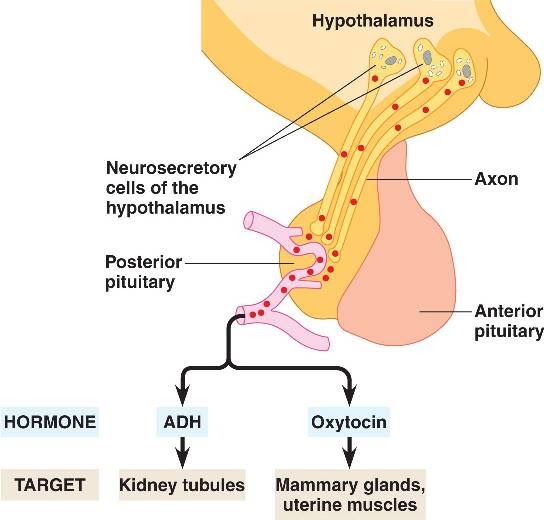Introduction
Osmoregulation
The Nephron
Introduction
Osmoregulation
Osmoregulation refers to the control of water potential of the blood. The blood is complicated, it has all these ions and proteins and stuff. Cells use various things up all the time and some more often than others at different times, night, day, sweat, tears, etc.
There are systems in place that keep the blood at the right composition and pressure. The hypothalamus and posterior pituitary in the brain release a hormone into the blood that reaches the kidney and enables its cells to take up more water, to prevent it being wasted in urine as the case may be.
The hormone is known as vasopressin or antidiuretic hormone (ADH), has a very short half life of 16-24 minutes as you can imagine since it regulates fast-changing things like water retention and blood pressure.
More specifically, the hypothalamus synthesises it while the posterior pituitary which is actually an extension of the hypothalamus, stores it for release into the blood.

ADH stimulates water retention by the kidney by:
1. Increasing water permeability in a part of the kidney cell which results in retaining more water and excreting more concentrated urine.
2. Increasing urea permeability by another part of the kidney cell which results in its concentration in the urine.
3. Increasing sodium absorption across the section of the kidney cell which circulates the solution, resulting in…
